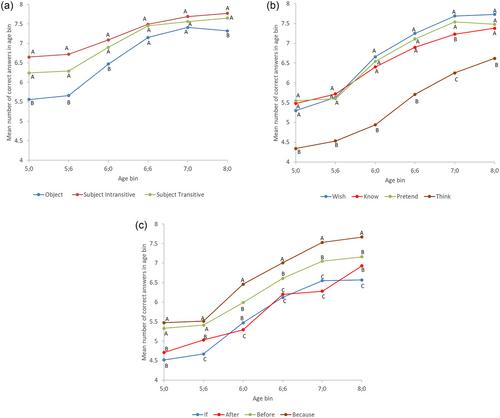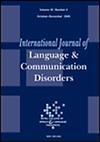The Understanding of Complex Syntax in Children From 5 to 9 Years, Using a Novel Assessment Approach – The Test of Complex Syntax- Electronic (TECS-E)
Abstract
Introduction
The present study investigated English-speaking 5–9 year olds’ (n = 600, normative sample) comprehension of relative, adverbial and complement clauses using the Test of Complex Syntax-Electronic (TECS-E), an online interactive assessment. with strong test-retest reliability, concurrent validity and internal consistency.
Method
Using an opt out protocol three groups of children were recruited from schools—a sample for whom we could ascertain test-retest reliability (n = 122), a sample to explore concurrent validity, using the Test for the Reception of Grammar (TROG-2) (n = 131) and a main normative sample (n = 906). The main sample was reduced to 600, to ensure that the final sample accurately represented the population of the Republic of Ireland, with respect to sex, socio-economic status and locale. Children completed the TECS-E independently in groups within their pre/school classroom. The TROG-2 was administered individually.
Results
Scores increased with age from 5–9 years with considerable growth in development between 5;06 and 7 years, suggesting that 7 years is an important milestone in children's understanding of complex syntax. Girls performed significantly better than boys, particularly between 6 and 7 years. Those from disadvantaged backgrounds scored significantly lower than those who were more affluent, until 7 years, and this was more marked in boys than in girls. Children performed highest on relative clauses, followed by complement clauses, and last on adverbial clauses.
Conclusion
This study provides a developmental hierarchy as well as important information regarding growth in English-speaking children's understanding of complex syntactic structures in the early school years and how this interacts with sex as well as social disadvantage.
WHAT THIS PAPER ADDS
- Complex sentences play a crucial role in children's language and literacy development. They become increasingly relevant as children progress through school, from both an academic and social perspective. Despite this, we lack a comprehensive picture of children's understanding of these types of sentences.
- This is the first study to report on a large sample of English-speaking children's understanding of complex syntactic structures between 5 and 9 years. In addition, the assessment tool used (the TECS-E) has been designed to reflect how children process language in everyday interactions, and to include constructions that follow the linguistic patterns of those that children say and hear in natural discourse.
- This study furnishes a reference dataset of the growth in typically developing children's understanding of complex sentences. This information can be used by clinicians to identify gaps in understanding and to guide the design and delivery of syntactic interventions.


 求助内容:
求助内容: 应助结果提醒方式:
应助结果提醒方式:


